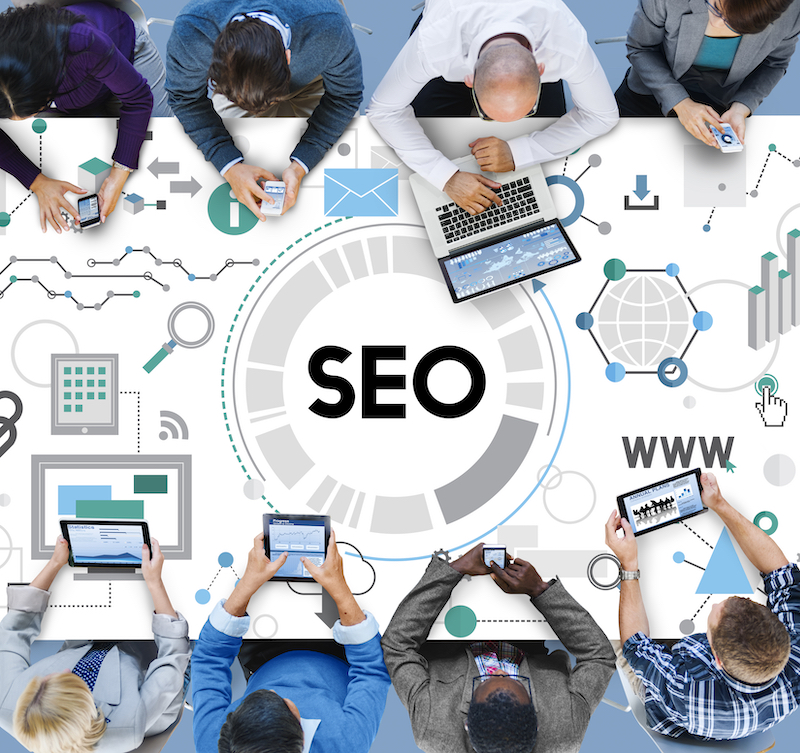In the ever-evolving landscape of digital marketing, search engine optimization (SEO) in Singapore remains a cornerstone for enhancing online visibility and driving organic traffic to websites. Within the realm of SEO, on-page optimization plays a crucial role in fine-tuning individual web pages to align with search engine algorithms and user intent. By doing on-page SEO optimization effectively, you can significantly improve your website’s ranking on search engine results pages (SERPs) and provide a better user experience for your audience.
Understanding On-Page SEO
On-page SEO refers to the practice of optimizing individual web pages to rank higher and earn more relevant traffic in search engines. Unlike off-page SEO, which involves external factors like backlinks and social signals, on-page optimization focuses on elements directly within your control. These elements include content quality, keyword usage, meta tags, URL structure, internal linking, and various technical aspects.
The Fundamentals of On-Page SEO Optimization
Keyword Research:
Conducting thorough keyword research is the cornerstone of any successful on-page SEO strategy. By understanding the phrases and terms your target audience is using to search for content related to your business or niche, you can tailor your website’s content to meet their needs effectively. Tools like Google Keyword Planner, SEMrush, or Ahrefs provide valuable insights into keyword volume, competition, and related terms.
It’s essential to identify high-volume keywords with manageable competition and strategically incorporate them into your content, headings, and meta tags. By doing so, you increase your chances of ranking higher in relevant search results and attracting organic traffic to your website.
High-Quality Content:
In the realm of SEO, content reigns supreme. Creating high-quality, engaging, and valuable content is key to capturing the attention of both users and search engines. Your content should aim to solve problems, answer questions, or fulfill the needs of your target audience. Ensure that your content is well-written, easy to read, and free of grammatical errors. Incorporating multimedia elements such as images, videos, and infographics can further enhance user engagement and provide additional value to your audience.
Meta Tags Optimization:
Meta tags, including title tags and meta descriptions, play a crucial role in on-page SEO optimization. Craft compelling titles (under 60 characters) and descriptions (under 160 characters) that accurately represent your content while encouraging users to click through. Incorporating relevant keywords naturally into these tags signals to search engines what your page is about and improves its visibility in search results.
URL Structure:
Optimizing your URLs to be descriptive, concise, and keyword-rich is essential for both user experience and search engine optimization. Use hyphens to separate words and avoid using numbers or special characters whenever possible. A clean and organized URL structure not only makes it easier for users to navigate your website but also helps search engines understand the content and context of your pages, ultimately improving your site’s overall SEO performance.
Header Tags:
Utilizing header tags (H1, H2, H3, etc.) is crucial for structuring your content logically and improving readability. The H1 tag should contain your main keyword and provide a clear indication of the page’s topic. Subsequent header tags can be used to divide content into sections and subsections, making it easier for both users and search engines to navigate and understand the content of your page.
Internal Linking:
Internal linking plays a vital role in distributing link equity throughout your website and improving navigation. Link relevant pages together using anchor text that includes descriptive keywords. This practice not only helps search engines discover and index your content more efficiently but also keeps users engaged and encourages them to explore more of your site, ultimately increasing the time they spend on your website.
Mobile Optimization:
With the increasing prevalence of mobile devices, optimizing your website for mobile users is essential for maintaining a competitive edge in the digital landscape. Ensure that your pages are responsive and load quickly on all devices to provide a seamless user experience. Mobile-friendly websites are favored by search engines and tend to rank higher in mobile search results, leading to increased engagement and conversion rates.
Page Speed:
Page speed is a critical factor in both user experience and search engine rankings. Minimize loading times by optimizing images, leveraging browser caching, and reducing unnecessary code. Tools like Google’s PageSpeed Insights can help you identify areas for improvement and optimize your website for optimal performance. By prioritizing page speed optimization, you can enhance user satisfaction, reduce bounce rates, and improve your site’s overall SEO performance.
Monitoring and Iteration
After implementing on-page SEO optimizations, your work doesn’t stop there. It’s crucial to continuously monitor your website’s performance and make adjustments as necessary to ensure ongoing success. Here’s how you can effectively monitor and iterate on your SEO efforts:
Utilize Analytics Tools:
Take advantage of analytics tools such as Google Analytics and Google Search Console to track key metrics related to your website’s performance. These tools provide valuable insights into important metrics such as organic traffic, bounce rate, average session duration, conversion rates, and more. By regularly monitoring these metrics, you can gain a better understanding of how users interact with your website and identify areas for improvement.
Track Keyword Rankings:
Keep an eye on your keyword rankings to see how your website is performing in search engine results pages (SERPs). Monitor changes in keyword rankings over time and identify any fluctuations or trends. This will help you assess the effectiveness of your on-page SEO optimization efforts and identify further opportunities for optimization.
Analyze User Behavior:
Dive deeper into user behavior data to understand how visitors navigate your website and interact with your content. Analyze metrics such as page views, time on page, scroll depth, and click-through rates to gain insights into user engagement and satisfaction. Use this information to optimize your content and improve the overall user experience.
Identify Technical Issues:
Regularly audit your website for technical issues that may impact its performance and visibility in search engines. Check for issues such as broken links, crawl errors, duplicate content, and page speed issues. Addressing these technical issues promptly can help improve your website’s SEO performance and ensure a smoother user experience.
Stay Updated with Algorithm Changes:
Keep yourself informed about updates to search engine algorithms and industry best practices. Search engines like Google frequently update their algorithms, which can impact your website’s search rankings and visibility. Stay updated with the latest developments and adjust your SEO strategy accordingly to stay ahead of the curve.
Test and Experiment:
Don’t be afraid to experiment with different strategies and tactics to see what works best for your website. Conduct A/B tests to compare different versions of your content or design elements and measure their impact on key metrics. Use the insights gained from these experiments to refine your SEO strategy and optimize your website for better performance.
Regular Reporting and Review:
Set up regular reporting intervals to review your website’s performance and track progress towards your SEO goals. Create comprehensive reports that highlight key metrics, trends, and areas for improvement. Use these reports to communicate progress with stakeholders and make data-driven decisions to drive continuous improvement.
By regularly monitoring your website’s performance and iterating on your SEO strategy based on data-driven insights, you can ensure that your website remains competitive in search engine rankings and continues to attract relevant organic traffic over time.
Conclusion
On-page SEO optimization is a fundamental aspect of any comprehensive SEO strategy. By focusing on elements like keyword research, high-quality content, meta tags, URL structure, and technical optimization, you can enhance your website’s visibility, attract more organic traffic, and provide a better user experience for your audience. Remember to stay up-to-date with the latest SEO trends and best practices to maintain your competitive edge in the digital landscape.
For businesses in Singapore seeking to maximize their online presence and achieve sustainable growth, partnering with a reputable digital marketing agency can be immensely beneficial. A digital marketing agency in Singapore can offer specialized expertise in on-page SEO optimization tailored to the local market.
From conducting in-depth keyword research to crafting compelling content and optimizing technical aspects, these agencies have the knowledge and resources to elevate your website’s search engine rankings and drive meaningful results. By leveraging the services of a trusted digital marketing partner, businesses can navigate the complexities of SEO with confidence and focus on delivering exceptional value to their customers.








